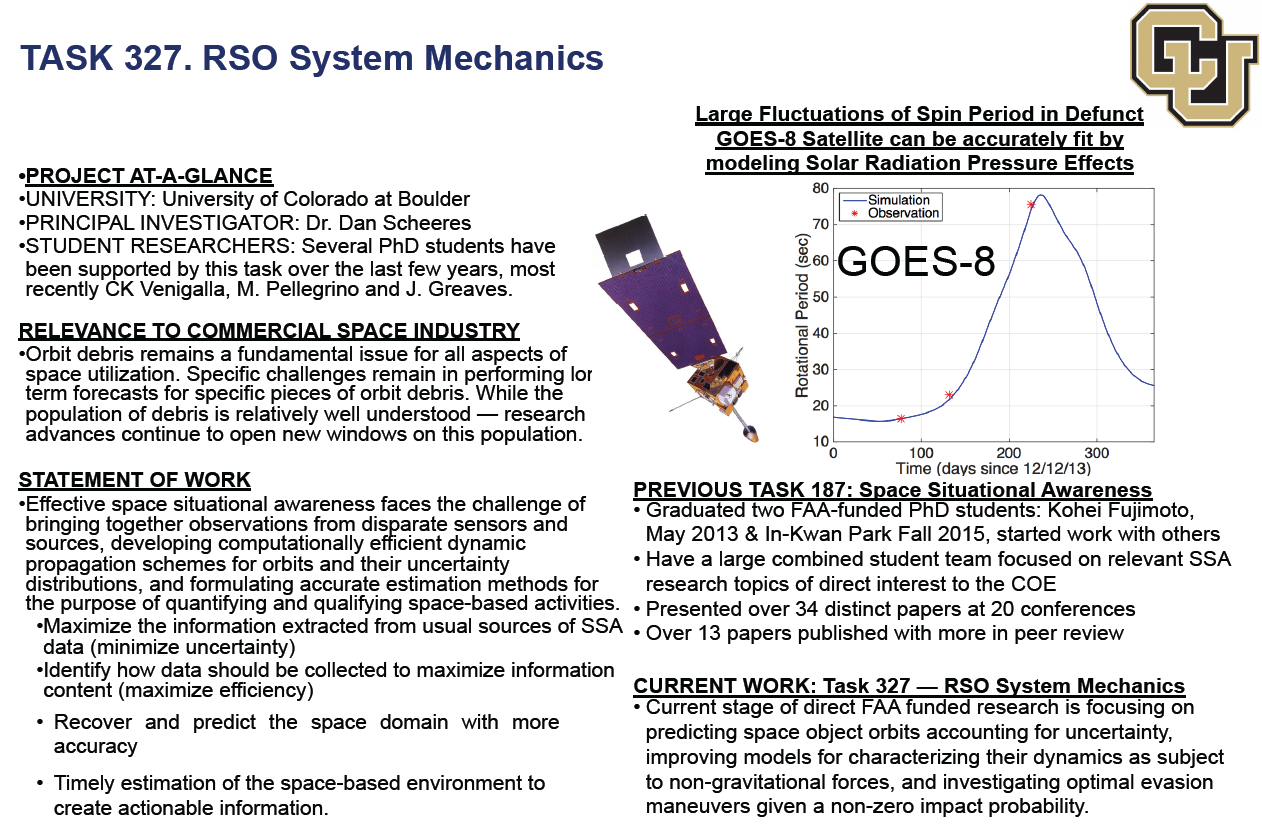372. Resident Space Object (RSO) System Mechanics
Team
| Name | Role | Primary |
|---|---|---|
| Dan Scheeres | Principal Investigator | ● |
| Dave Klaus | Principal Investigator | |
| Stephen Earle | Tech Monitor | ● |
| Stephanie Rosario | Fiscal Admin | ● |
| Samuel Weir | Fiscal Admin | ● |
Research Area
1.0 Space Traffic Management & Spaceport Operations
Project Description
Effective space situational awareness faces the challenge of bringing together observations from disparate sensors and sources, developing computationally efficient dynamic propagation schemes for orbits and their uncertainty distributions, and formulating accurate estimation methods for the purpose of quantifying and qualifying space-based activities.
Project Outcomes
The ultimate desired outcome of this research is to:
(i) Maximize the information extracted from usual sources of SSA data (minimize uncertainty)
(ii) Identify how data should be collected to maximize information content (maximize efficiency)
(iii) Recover and predict the space domain with more accuracy
(iv) Timely estimation of the space-based environment to create actionable information.
Summary of Output
The increasing population of debris and operational spacecraft in Earth orbit is both a
near-term concern and long-term threat to orbital operations. These objects include upper stages of launch vehicles, staging elements, failed/retired spacecraft, operational spacecraft, debris from fragmentation events, and other objects resident in Earth orbit as a result of various means. Current efforts to track these objects are limited by many factors including the data available, the extent to which the available data can be efficiently processed, the ability to realistically model the behavior of objects over time and the uncertainty of environmental factors. In order to safely operate within the space domain, an improvement in the understanding of the danger posed by uncontrolled resident space objects (RSO) will be vital. Additionally, as commercial orbital activities increase in number and scope all efforts must be made to minimize the resulting debris produced. In minimizing the amount of threatening debris it is important to fully comprehend and understand the amount of time objects will remain in orbit, the effectiveness of proposed mitigation efforts, and how these change with time, perturbations, and solar activity levels.
Quad Chart
